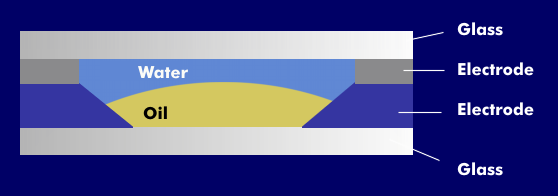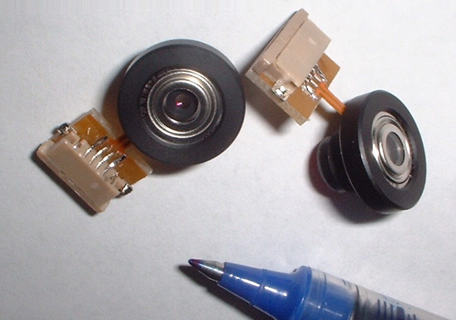liquid lens
Since cell phones, smartphones and tablets are extremely compact and space-saving, conventional lens systems with their mechanical focusing devices cannot be used in these devices. Liquid lenses, in which the shape of a drop of liquid is changed, have been developed for these applications.
Liquid lenses use mechanical forces or the electrowetting effect with which the surface shape of liquids can be changed. In liquid lenses that work mechanically, the polymer liquid is sandwiched between a solid substrate and a flexible membrane. To change the focal length, additional fluid is forced into the lens from a reservoir, causing the membrane to deform spherically.
With such mechanically operating liquid lenses, focal lengths between 20 mm and 1,000 mm can be set.
Another technique uses the electrowetting effect with which the shape of liquid droplets can be controlled with an electric field. Liquid lenses working on this principle are only a few millimeters in size and are ideal for wearable cameras and cell phone cameras. Their focal length can be controlled between a few millimeters to infinity.


